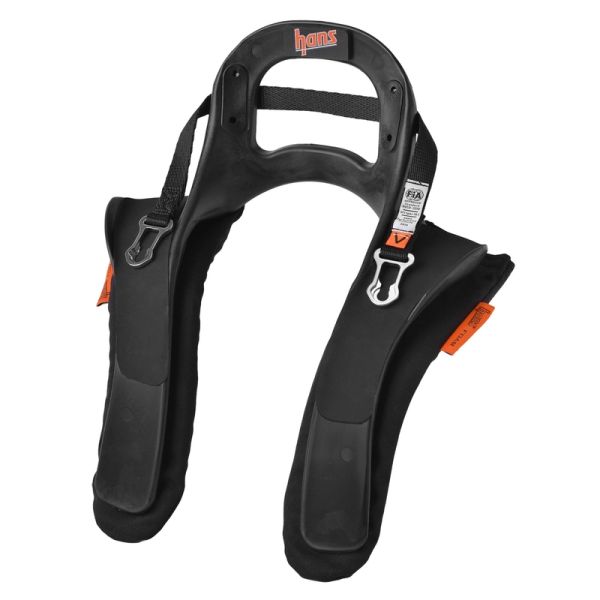FHR|Frontal Head Restraints
A Frontal Head Restraint, although better known as an FHR Device is designed to prevent rapid frontal movement of the head during an impact in an accident, and is attached with the tether to the clips as fitted on all motorsport helmets.
These come in two different versions, the Simpson Hybrid straps around your body to hold in position or the Stand 21 versions that are locked in position on your body by the seat harnesses.
FHR devices come in different sizes to suit the individual and with the stand 21 version a 20-degree version for Rally and Saloon cars, and 30 degrees for the laid-back position in Formula Race cars.

About Frontal Head Restraints (FHR)
A Frontal Head Restraint is an essential safety item for any motorsport competitor and is a mandatory requirement for all MSUK and internationally sanctioned events.
Frontal Head Restraints (FHRs) are available in two angles, one suited to the more reclined seating position of a formula car and the other designed for a more upright Saloon, GT or Rally driving position.
With options from Simpson and Stand 21, there are a number of choices for new drivers, beginners and experts alike.
Extra additions such as padded yokes, robust constructions, and post-sliding tethers are included, all designed to meet strict safety standards while prioritising performance.
What is a Frontal Head Restraint?
Frontal head restraints (FHRs), also known as head and neck restraints or HANS devices, are safety devices designed to reduce the risk of head and neck injuries in motorsports. These devices are typically worn by racecar drivers and are intended to prevent the head and neck from moving excessively during a crash or sudden deceleration.
There are several types of FHRs and HANS devices on the market, but they all work by attaching to the back of the driver's helmet via posts and providing a tether to the driver's harness. This tether serves to limit the range of motion of the head and neck during a crash, helping to prevent serious injuries such as basilar skull fractures and spinal cord injuries.
One of the main benefits of FHRs and HANS devices is that they can help to reduce the risk of injury even in the event of a high-speed crash. For example, in a frontal impact, a driver's head and neck can be subjected to forces of up to 50g, which can cause serious injury or death. By limiting the movement of the head and neck, an FHR can help to reduce the risk of these injuries.
In addition to these benefits, FHRs are also relatively easy to use and can be quickly and easily attached to a driver's helmet. They are also lightweight and unobtrusive, so they do not impede a driver's ability to focus on a race.
In conclusion, frontal head restraints and HANS devices are important safety devices for motorsport and can help to reduce the risk of serious head and neck injuries in the event of a crash.
-
Who makes the best FHR device?
-
How do I know which size FHR to choose?
-
What tether comes fitted to an FHR?
-
What is the difference between FHR and HANS?

 Dealer
Dealer


